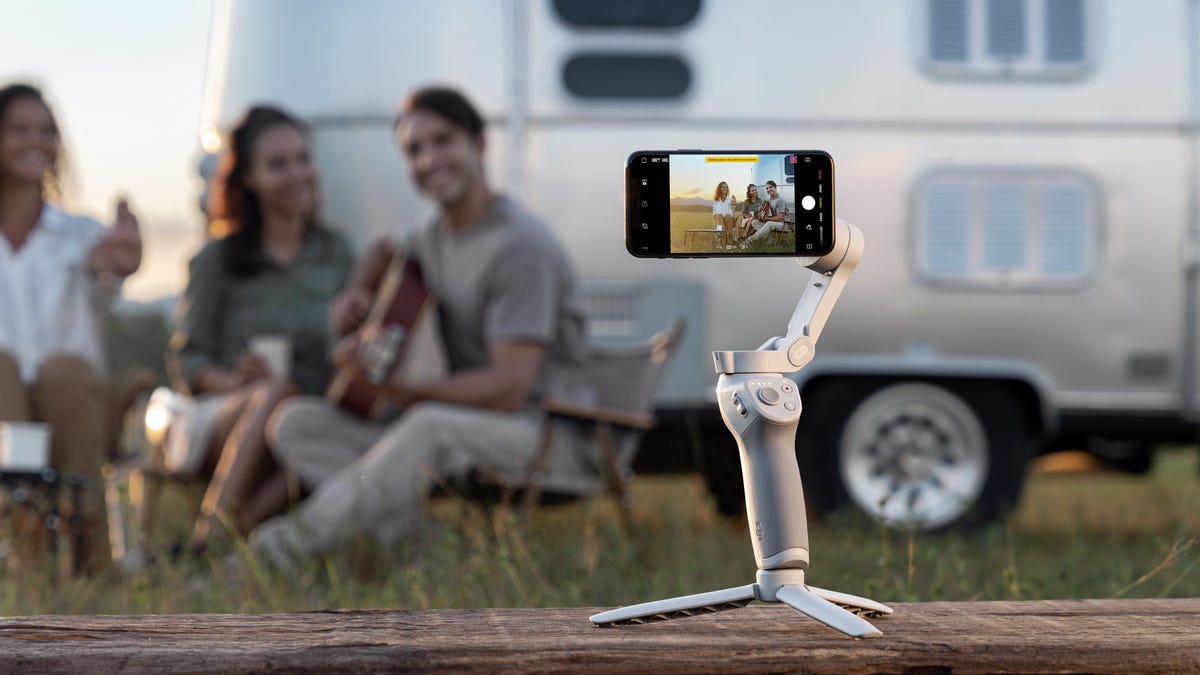 Why You Can Trust CNET
Why You Can Trust CNET DJI OM 4 phone stabilizer uses magnets to make shooting smooth video even easier
Everything's better with magnets.

The new OS 4 is nearly identical to its predecessor except for one key detail: the phone mount.
Anyone who's used a phone camera stabilizer, also known as a gimbal, knows that one of the most frustrating parts of using it is mounting your phone and then getting it perfectly balanced. DJI managed to take just about all the pain out of the process with a couple of magnets.
The new DJI OM 4 -- the company's dropped the Osmo Mobile naming -- picks up where the last model left off. It has the same compact, lightweight folding design for easy travel. It has the same controls, making one-handed use a breeze. And it still has a built-in battery for up to 15 hours of use. What's new is how you mount your phone.
Instead of having an adjustable clamp permanently fixed to the stabilizer arm, there's a high-grade circular magnet at the end. To attach your phone, you use a slim magnetic phone clamp that snaps onto the stabilizer (it has a notch so it sits properly every time). This way you can take your phone off and leave the clamp attached so it's ready to snap on and start shooting when you are.
But if you use a gimbal a lot, DJI has an even better option: A magnetic disk that adheres to the back of your phone case. DJI essentially took a magnetic phone mount for your car (it even has a ring you can slip your finger through) and turned it into a mount for the gimbal. Not only does this make it fast to attach, but because it's properly positioned on your case, you'll never need to center and balance your phone in the mount.
DJI used stronger motors on the OM 4 to compensate for larger phones. However, if you like to add lenses to your phone, you might still need counterweights. Moment lenses, for example, has the OM 4 available and a set of weights to keep the phone balanced.
The OM 4 works with your phone's native camera app with basic functionality supported by the controls. However, a big reason you'd go with one of DJI's stabilizers over another brand is its Mimo camera app. Mimo's intelligent features like its updated ActiveTrack 3.0 for automated subject tracking and gesture controls for triggering the camera for selfies are a huge help for beginners.
DJI also updated the OM 4 with a Dynamic Zoom option that automates a digital dolly zoom effect and Spin Shot that lets you rotate your phone in a circle with the joystick for a spinning effect. There's a new "clone me" option for panoramas, too, so you or another subject can appear multiple times in one shot.
The DJI OM 4 is available now for $150 (about £110 or AU$200). That's a $30 price increase from its predecessor but it does now come with a tripod. Coupled with the magnetic mounts, it seems like it's worth the added cost. What do you think? Let me know in the comments.

